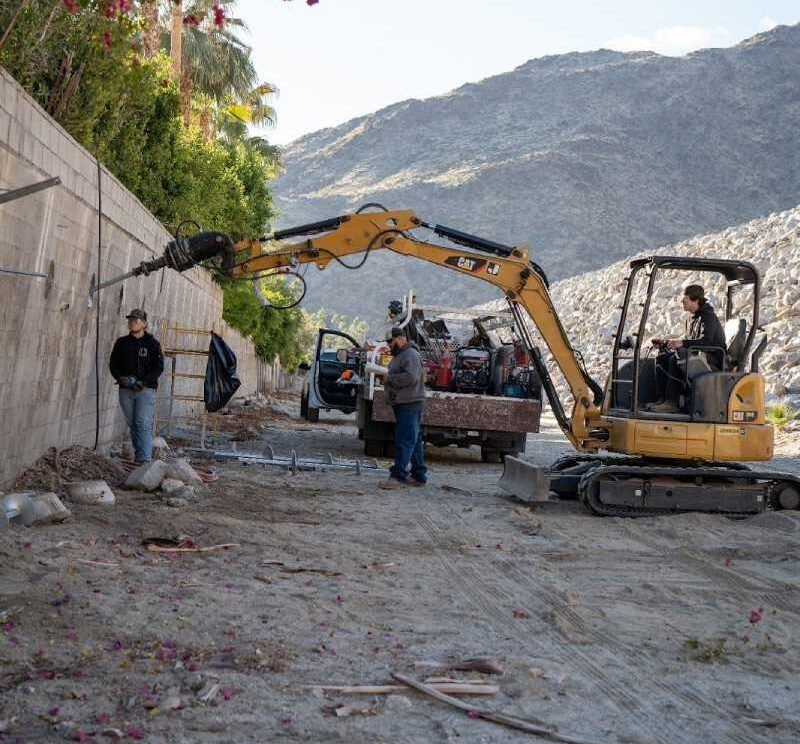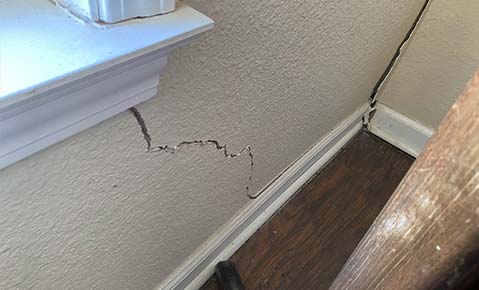A retaining wall is an important structural element that offers several benefits to your property when it functions properly. However, there are many instances in which retaining walls can fail, which often leads to costly repairs. The purpose of this article is to detail a few of the reasons why retaining walls fail. But before we do that, let’s make sure that you have a full understanding of how an effective retaining wall should function.
What is the Purpose of a Retaining Wall?
The main purpose of a retaining wall is relatively simple. These walls are responsible for holding back significant amounts of soil. Construction teams build walls meant to retain soil for several reasons.

For example, if you have a sloping property, chances are that there is not much usable level space in your yard. Installing a retaining wall is one way to lessen the severity of the slopes both above and below the wall. By accounting for a significant amount of a slope’s vertical change, a retaining wall gives you the chance to create flatter areas in your yard where you can create patios, lawn spaces, and much more.
Retaining walls also helps manage stormwater and reduce erosion on your property. By lessening the severity of slopes, these walls reduce the effect of erosion that flowing surface water can cause. The best retaining walls also feature comprehensive drainage systems that help to capture stormwater and convey it away from your slopes and outdoor living areas.
Along with those main functional responsibilities, retaining walls can also offer seating when they are built to a certain height. These walls can also add an immense amount of beauty to your property, depending on their design and materials. As such, retaining walls gain their value and purpose thanks to their ability to improve the functionality of your yard and its visual appeal.
Causes of Retaining Wall Failure
Now that you know some of the advantages that retaining walls provide and how they should operate in an ideal scenario, it is time to learn how these structures can fail. Below are some of the most common reasons for structural failure in retaining walls.
Hydrostatic Pressure
One of the top reasons why retaining walls fail is hydrostatic pressure. While this term is not familiar to most people, it is not all that difficult to understand. Hydrostatic pressure refers to the force that water exerts on an object.

We’ve already mentioned that retaining walls hold back a significant amount of soil. However, when that soil becomes saturated, the wall will need to hold the weight of the water as well. At times, this weight can become so immense that the wall will begin to pitch forward, bow outward, or fail entirely.
Since it is well-known that hydrostatic pressure can cause structural failures, well-constructed retaining walls include drainage systems that help to relieve that pressure. However, if a wall lacks a means of dealing with water, it will likely fail to hold back the force of water-soaked soil behind it.
Poor Construction Techniques
In the previous section, we alluded to the fact that a lack of drainage can cause a retaining wall to fail due to excessive hydrostatic pressure. However, there are many other ways in which poor construction techniques can cause your retaining wall to fail over time.
There are many factors and details to consider when building a retaining wall. If your builder is inexperienced or cuts corners during construction, you cannot expect your wall to last for a long time. As such, it is always important to seek out a construction team with plenty of experience that knows how to build a retaining wall that lasts.
Tree Root Expansion
Another common reason why retaining walls fail relates to the expansion of tree roots. While it seems that tree roots would not be strong enough to compromise a sturdy wall, nothing could be further from the truth.
If your retaining wall sits near large trees, the roots of those trees can eventually work their way behind, below, and through the wall. As the roots continually expand, they can compromise the wall’s foundation and cause cracks in the wall itself, both of which make structural failure more likely.
Material Decay
Our final common reason why retaining walls fail has to do with the materials that make up these walls. Over time, it is natural for building materials to deteriorate and receive damage during use. As those damages accumulate, the wall will only become weaker and more prone to failure.
For instance, walls composed of timber may experience rot after continually coming in contact with water over the years. Similarly, concrete retaining walls can develop cracks that will steadily worsen until the wall fails.
Are Some Types of Retaining Walls More Likely to Fail?
When evaluating the structural capabilities of retaining walls, you’ll discover that some of these walls are more likely to fail than others. As mentioned, walls that lack drainage are more vulnerable to hydrostatic pressure, which eventually leads to failure. Likewise, walls that are poorly constructed in general are also more susceptible to structural problems.
The age of a retaining wall can also play a role in its likelihood of failing. Since the materials of an older wall have had more opportunities to deteriorate, they can become significantly weaker than walls that were properly built not long ago.
Hire a Professional to Repair Your Wall
If you are dealing with a failing retaining wall, knowing the reasons that cause this issue is an excellent starting point. However, you’ll need to take additional steps to repair the retaining wall and restore your wall to full functionality. The best way to do that is to hire a professional construction team that you can trust.
At Dalinghaus Construction, we have over 50 years of collective experience in the construction industry, and we serve both residential and commercial customers throughout Southern California, Nevada, and Arizona. If you want to learn more about how we provide hillside repair, seawall repair, and many other services, reach out for a free estimate today!






